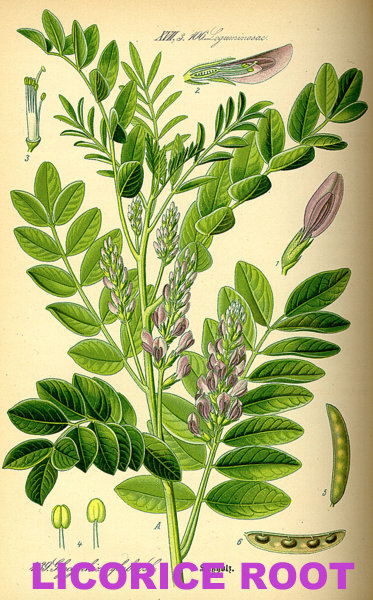 Licorice Root has been around as an herbal health aid for thousands of years in a variety of cultures, including Asia, Europe and even ancient Egypt. It is said that King Tut’s tomb contained large amount of licorice for his afterlife pleasure.
Licorice Root has been around as an herbal health aid for thousands of years in a variety of cultures, including Asia, Europe and even ancient Egypt. It is said that King Tut’s tomb contained large amount of licorice for his afterlife pleasure.
Even today, the Chinese value licorice to stabilize other flavors in their foods, and as an herb, to promote better energy and wellness.
How does licorice root benefit thyroid patients with slightly low cortisol? If saliva cortisol results prove slightly low cortisol at one time, licorice root, especially with the key ingredient glycyrrhizin, may have possible benefit, say certain articles. It is said to extend the life of the cortisol you do have by slowing down its breakdown to cortisone, and thus, making it more available. i.e. it can help if one has simply low afternoon cortisol, for example.
It’s also said to activate the aldosterone receptors.
Can I just eat the candy licorice and get the same benefit?
It needs to be the herb “licorice root” rather than candy, and which can be found in capsules, tablets, and liquid extracts. You can even get “licorice root” teas.
How much do I use?
Patients go by the directions on the bottle first to see if that’s enough to see improvement. Other sites say 250-300 mg. This study says an upper limit of 100 mg/day. Definitely see if your doctor has experience with amounts from. his patients.
How long can I use it?
It’s mostly recommended not to go longer than 4-6 weeks, then take a two week break.
Side effects?
Some patients have experienced a rise in blood pressure with its use after several weeks due to how licorice root can lower potassium levels, so it’s recommended to regularly check potassium and blood pressure. Other side effects “could” include increased fluid retention, headaches, anxiety…mostly relayed to the tanking potassium. Some people just take potassium supplements while taking licorice root. Coconut water is a great source, for one. Licorice root is not recommended if you already have high blood pressure or heart disease, or are pregnant.
I found a licorice root product that says DGL. What is that?
DGL stands for “deglycyrrhizinated licorice” and the “de-” in front of “glycyrrhizinated” means the important glyceyrrhizin has been taken out. The latter is the most important ingredient for the above positive effect. So that’s not the kind of licorice root which will help extend the life of cortisol. 🙁
Can I use it if I have severe low cortisol?
Possibly not a good idea, as some have reported over-stimulation. Severe low cortisol seems to need cortisol replacement, as explained here.
Important notes: All the information on this website is copyrighted. STTM is an information-only site based on what many patients worldwide have reported in their treatment and wisdom over the years. This is not to be taken as personal medical advice, nor to replace a relationship with your doctor. By reading this information-only website, you take full responsibility for what you choose to do with the information on STTM or its outcomes. See the Disclaimer and Terms of Use.